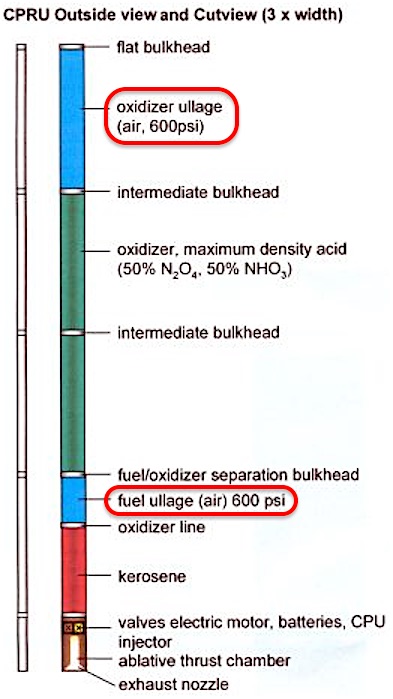This comment and others below this answer address ullage.
"Ullage" basically just means "the portion of the tank that isn't filled with liquid". The extended rocket-science implications of ullage are implicit in casual rocket-science discussion. The fact that there's gas in there at all provides "ullage" in the most restricted sense; the fact that the booster is always under acceleration from ignition until the propellant runs out provides "ullage" in the rocket-science sense; the fact that it's pressurized provides pressure.
Question: But I still don't completely understand what is or isn't ullage in rocket science context. Is it only a noun, or does it have a form as a verb? In this context does ullage always refer to a force that pushes liquid fuel to the end of a tank where the outlet exists? Can gas pressure in a tank also containing liquid propellant provide ullage, or is ullage restricted to an acceleration (e.g. from the use of an ullage motor just prior to engine ignition) or a diaphragm or gas bag?
What got me started on this is the image below from the Astronautix page OTRAG. The gas volume is labeled ullage. I assumed that the gas pused on a sliding bulkhead in order to push the fuel against the outlet, thinking that that's what ullage motors do. But the bulkheads are fixed and perforated according to this answer which links to OTRAG – A Low Cost Rocket (U2, September 2014) (September 2014_u1, Joachim J. Kehr, Editor SpaceOps News) so the label only refers to the gas volume.

Source: OTRAG from Astronautix, zoomed, sharpened and annotated